Pulps (the)
| série: | Etude Comics |
| dessinateur / scénariste: | Goodstone Tony |
| éditeur: | Chelsea EO 1970 |
| genre: | Etude |
| classement: | biblio525 |
| date: | 1970 |
| format: | cartonné, avec jaquette |
| état: | TBE |
| valeur: | 10 € |
| critère: | ** |
| remarques: | the Pulps, 50 years of American Pop culture, this book is the first survey and anthology of art and literature from the period 1896 to 1953, a unique presentation, this volume contains 100 full-color reproductions of rare original cover art and more than 50 stories, poems, features and articles, none of which have ever been in hardcovers, they are presented with their original black and white illustrations and ads and are integrated into their social context by a commentary of the editor Tony Goodstone Contents - introduction, nickel heroes and dime novels n.b. a nickel, in American usage, is a five-cent coin struck by the United States Mint whereas the dime is a ten-cent coin, one tenth of a United States dollar, labeled formally as "one dime" 2/ Part one, mainstream chapter 1: adventure pulps (Burroughs, Wallace, etc) chapter 2: sports chapter 3: aviation and war 3/ Part 3, parallel forms chapter 4: western and frontier (Max Brand and others) chapter 5: detective and mystery (Hammett, Kantor, Bradbury, etc) 4/ Part 3, exploiting the girls chapter 6: innocence (Russ West and others) chapter 7: straight out sex (Howard, Bellem and Lord) 5/ Part 4, extension of the finite chapter 8: supernatural (Tennesse Williams, Robert Howard, H.P. Lovecraft, Page Cooper and others chapter 9: science fiction (Harl Vincent and Stanley Weinbaum) chapter 10: paper tigers, the hero pulps (the shadow, operator 5, the secret sentinel, the red destroyer) >> voir aussi livres/polar(operator 5/Steele curtis) Bibliography - the bloody pulps by Charles Beaumont (1962) - Radio's golden age by Frank Buxton and Bill Owen (1966) - the simple art of murder by Raymond Chandler (1950) - the weird adventures of the Shadow by Walter Gibson (1966) - under the moons of Mars by Sam Moskowitz (1970) - magazines in the twentieth century by Theodore Peterson (1956) - the hardboiled omnibus by Joseph Shaw (1946) - whatever happened to the Pulps? by Richard Wilkinson (1962) annexes - couverture 1er et 4ème plat - cover dare-devil aces (1937) - cover horror stories (1935) - cover spicy mystery stories (1936) - cover Operator 5 (1934) Information proscribed by parents, condemned by educators and ignored by critics, the Pulps were the outgrowth of a fiction form rooted in the early nineteenth century the Pulps thrilled people of all classes with hundreds of lurid titles like Spicy Detective, Weird Tales, the Shadow and Doc Savage, their garish covers depicted an astonishing variety of categories: detective, science-fiction, western, supernatural, jungle, pirate, aviation, war, sports, horror, super-hero, love and straight-out sex the cradle of sensationalism in American art and literature, the Pulps contained some of the best and a lot of the worst adventure fiction ever written, the best came from master-writers like Edgar Rice Burroughs, Ray Bradbury, Max Brand, Dashiell Hammett, H.P. Lovecraft and Edgar Wallace who were attracted to the Pulps' free-for-all formats and, in the midst of the depression, their high pay-scales, noted writers like Tennesse Williams, MacKinlay Kantor and Philip Wylie found a market for their early efforts in the Pulps, the best of the Pulps tempted their readers with fantastic cover art and believable stories set in the farthest-flung corners of the imagination, from the icy wastes of the Arctic to the infested jungles of the tropics and beyond to the exotic unknown: the planets and the underworld of horror and the supernatural the worst of the Pulps titillated their readers with weird stories of flagellation, sadism and voyeuristic sex involving incredibly naive (but always well endowed) females "flash of white thigh/breasts straining at their silken prison" and even at their worst the Pulps were still great history in 1896, publilsher Frank Munsey, believing that a story was more important than the paper it was printed on, changed "the Argosy" from a boy's magazine to an all-fiction magazine with untrimmed, rough wood-pulp pages and measuring about 7 by 10 inches (17 x 25 cm) and half-an-inch thick ( 1,2 cm), he had created the first "Pulp", before failing circulation (and finally one major distributor's embargo) killed them off in 1953, the Pulps had divided, amoeba-like into hundreds of titles and furnished inexpensive reading, escape from social oppression and hope for the future for tens of millions of Americans in 1970 only a handful of small digest-sized detective, western and science-fiction magazines remained: the dull residue of a once-gaudy galaxy that had given early expression to some of the finest artists and writers and inspired countless others for the writers the Pulps were a bonanza, although fable has it that the pay was a cent a word, many Pulps were paying as high as a nickel during the leanest years of the depression, prolific writers like Max Brand could match incomes with Hollywood stars, furthermore, with hundreds of specialized titles on the stands, the Pulps provided new writers with the opportunity to publish for the first time as well as the means to develop their craft, many writers either sold stories to the film companies or advanced (or degenerated) to writing for the movies, but above all, writers wrote for the Pulps because it was fun |
| couvertures: | 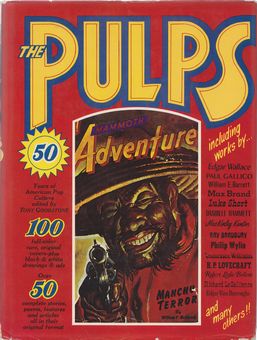 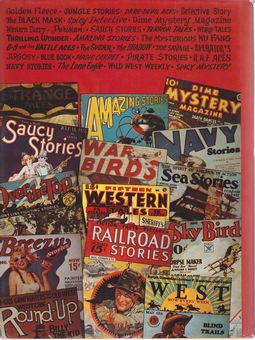 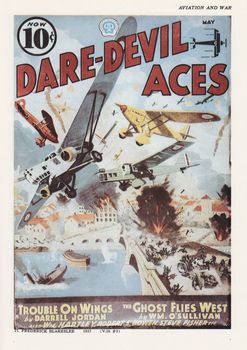 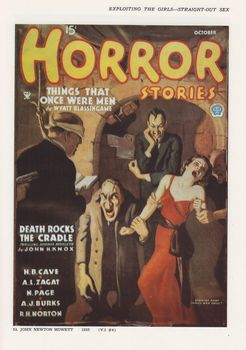 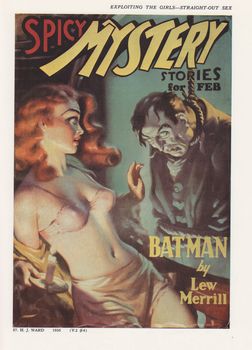 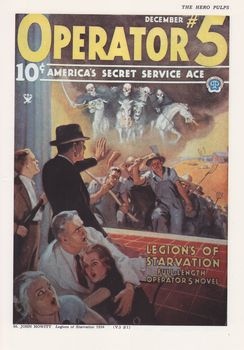 |
Copyright 2008 - 2025 G. Rudolf
